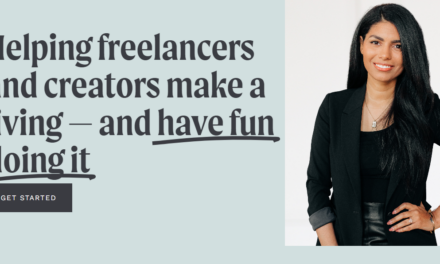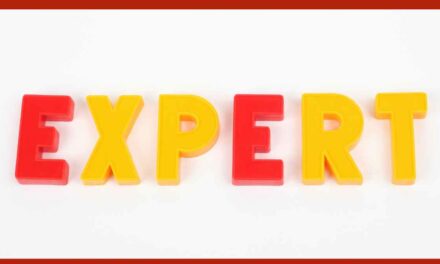
MARCH 15, 2024
5 things to do
Ask Your Audience To Do Something
CTA stands for call to action.
For you, those three letters stand for an opportunity to move your audience along their journey with your content brand.
Here are five things to do to use CTAs effectively:
1. Evaluate the options: Effective CTAs for content entrepreneurs typically target one of four actions – purchase, download, subscribe, and learn more.
When users click a purchase CTA, they usually intend to buy. Download actions usually result in your audience getting an infographic, report, template, etc., related to your content tilt.
Subscribe CTAs often work well with content entrepreneurs’ goal of growing their audience. The audience offers their email addresses because they believe you will give them something of value, such as a newsletter or ebook. A learn-more CTA aims to continue the customer’s journey. They usually direct people to content that delves deeper into the topic of the content they just consumed.
2. Add CTAs to your content: Where you put your call to action is nearly as important as the text. Each page on your website should include at least one CTA. Think about the journey you want that person to take on the page. If they’re on your blog and read to the end of an article, does it make sense to ask them to buy your book? Or should you let them give you their email for your newsletter before asking for money?
Include CTAs in your newsletters, marketing emails, social media, and printed material. You don’t always need to be selling, but you do need to help them go further in their journey with your brand.
3. Craft succinct CTAs: Writing the copy for a CTA button or a hyperlink might seem easy, but it’s challenging. The text should be short, precise, and eye-catching, or your audience might skim right past it.
Consider these two CTAs for people to sign up for a newsletter:
- Sign Me Up For Your Emails
- Subscribe Now
Did you even read all of the first one? There’s nothing wrong with a lot of text in a button. But every word needs to add value.
If a CTA requires more information to motivate a click, craft one with a headline and body copy. It still has to be clear, concise, and specific.
4. Use common language with a twist: A CTA usually isn’t the time to get too creative with your phrasing. Use language your audience already recognizes as a sign to take action, such as “subscribe now,” “get started,” “download now,” “sign up,” “contact us,” etc.
But don’t be afraid to get more specific. Don’t say “Learn More” when you could say “Learn More About Publishing.” Tailor your CTAs to your target audience. If you produce healthy eating journals, instead of “Buy Now,” you might say “Get Your Health Journal.”
5. Track your CTAs and get an AI assist: Keep a list of your CTAs and track their effectiveness. When you need to create the next one, review the list to see if you could reuse any. Also, take time to draft a few new ones. Don’t be afraid to make them longer than they should be. You can always edit them later.
You also can use an assist from generative AI tools. Here’s a sample prompt:
“I am creating a call to action. It should result in [USER ACTION] and will include the following on-page text [INSERT PAGE COPY]. Using the style of [LINK TO ONE OF YOUR ARTICLES], write 5 call-to-action examples based on this information.”
If you’re using any specific keywords in your CTA, add the following.
“Each call to action should use [KEYWORD].”
You can generate hundreds of examples this way. Most of them will be bad. But you might find a new action word or simplified phrasing that suits your audience.
A CTA can mean the difference between a new subscriber and a missed opportunity. Be thoughtful about including CTAs in your content and creating ones that work for your audience and your brand.
– Paul Hobday
Helpful Resources:
- How To Drive Reader Engagement and Sales With Effective Calls to Action
- How To Market To Your Subscribers
- 5 Things To Do To Convert Your Viewers Into an Audience You Own
tilt publishing book club
Jenny Magic is the founder and CEO of Build Better Change. She and Melissa Breker recently republished Change Fatigue: Flip Teams from Burnout to Buy-In.
Why this book?
Working as communications strategy consultants, we were dismayed by the effort organizations poured into strategic planning (what to do) versus the time invested in building buy-in and consensus (who will do) … We wanted to give leaders a handbook for getting teams on board so everyone can be on the same team pulling together. We also wanted to make the complex field of change management more approachable for business leaders who may not have time to get trained or certified on the subject.
When did you first have the idea to write a book?
The idea simmered through the pandemic into a few rants and a rough outline that I kept rearranging. I hired my book coach and editor (shoutout to Maggie Frank Hsu) on Dec. 28, 2022, and we were “pencils down” on March 15, 2023. It was released and hit the organizational change bestseller list on May 8, 2023.
Describe your creation process.
I was trying too hard to get an outline done before hiring help, which was a huge waste of time. Once Maggie got my messy ideas, she quickly reorganized them and gave me weekly micro-assignments (via comments in our Google Doc) that were easy to tackle between meetings. It became a conversation on a topic I’m passionate about rather than a blank page staring at me to fill.
Share a pleasant surprise.
We didn’t realize how many podcast hosts watched the Amazon Book rankings closely. As our sales ramped up over our launch week, we were approached by multiple hosts to be guests on their shows, which greatly increased our reusable content. We were also thrilled to have a PR team reach out and offer to help us get bylined articles in HR and industry publications. All of this led to a huge bump in awareness. We had past clients and colleagues reaching out to congratulate us and start new projects, plus a ton of attention from new connections and business leads.
Are you marketing the book?
Not as much as we could. Since our goals are credibility and the growth of our respective consulting businesses, selling the book is more of a bonus revenue stream. We have had a number of bulk sales where organizations have purchased for their teams, and we’re excited to partner with Tilt Publishing so we can do that even more effectively by selling directly on the book website.
Advice for others considering a book?
- Do it. Don’t wait. Everyone has a topic they want the world to understand, and it is validating to prove to yourself that the idea has merit.
- Hire a trusted outsider for developmental editing. This is the part where whole chapters move around, and major themes get reworked. This is very hard to do on your own – you’re just too close to the material.
- The hardest part is not writing or marketing; it’s distribution. Retailers vs. direct sales, digital formats and audiobooks, pricing, etc. We self-published the book in 2023 before Tilt Publishing picked up our republishing effort in 2024. The before/after (distribution) is dramatic. Get help for the tactical part.
5 things from the tilt
- Just 51 days until the start of Content Entrepreneur Expo … AND … two weeks until the end of spring pricing. Save your seat now!
- In this episode, Matt and Lauren explain why indie authors need to stop relying on Amazon as their primary sales channel. (Publish & Prosper)
- Joe discusses a very tough topic: Is it more difficult today to become a successful content creator? (Content Inc.)
- Joe and Robert discuss how the next 12 months are critical for AI content. (This Old Marketing)
- Tilt Your Business: A Weekly Mastermind for Content Entrepreneurs starts at 12 p.m. US EDT Tuesday on LinkedIn.
5 things to know
Money
-
Learn and earn: Skillshare, the online course platform, will soon add services, content, and products to expand the marketplace for creators using the online course platform. It gained the tech and key assets from a Superpeer acquisition. [Skillshare]
Tilt Take: Making it easier for a content entrepreneur to build their business (and stay on their platform) makes common sense for the third-party platform. For the entrepreneurs? Maybe. Maybe not. -
Flow and squeeze: Recently YouTube-retired megastar MatPat said he expects the dam to burst with creators leaving the platform. But, some argue, it could be consolidation among creators who see partnerships as a way to avoid running a business beholden to the whims of tech platforms. [Business Insider]
Tilt Take: Entrepreneurs who seek a long-term, sustainable content business already do this.
Audiences
-
Beyond looks: An internet celebrity’s trustworthiness is vitally important, but their physical attractiveness is not when influencing viewers about travel destinations through short videos, according to a recent study. [Nature]
Tilt Take: Well, that’s nice to know for both creators and brands partnering with creators (at least for those outside the “beauty” industry).
Tech and Tools
-
No more shhh: YouTube Music is expected to let users “trim the silence” – automatically skipping the stretches of silence in a podcast. [9 TO 5 Google]
Tilt Take: This move will prevent listeners from wondering if their podcast-listening app stopped working.
And Finally
-
Tell me early: Spotify will add its countdown feature for audiobooks. It lets authors and publishers start a countdown to launch day on their profiles. [Tech Crunch]
Tilt Take: Always market your book BEFORE launch day.
Get more of the Full Tilt stories on TheTilt.com.
Know a content creator who’s going full tilt? DM us or email [email protected].
Want to advertise on The Tilt? Go here.
Or email us at [email protected].
Was this email forwarded to you? Get your own sub here.
Copyright ©2024 Lulu Press, Inc. All rights reserved.
Update your preferences | Unsubscribe | 700 Park Offices Dr., Suite 250, Durham, NC 27709





